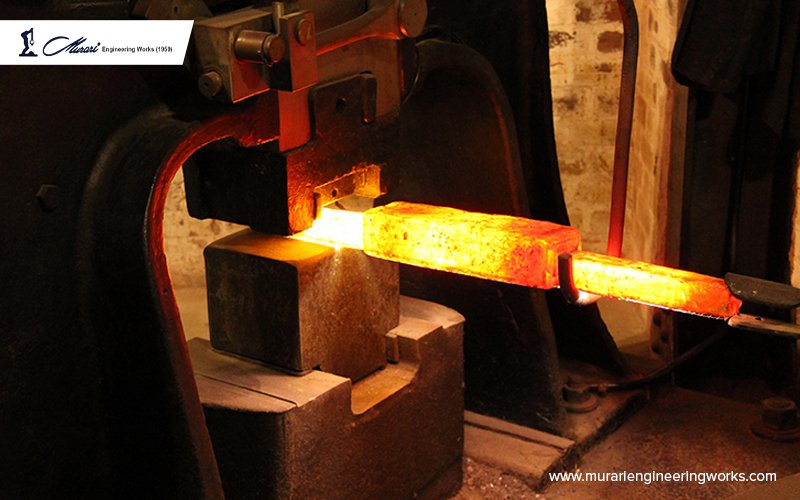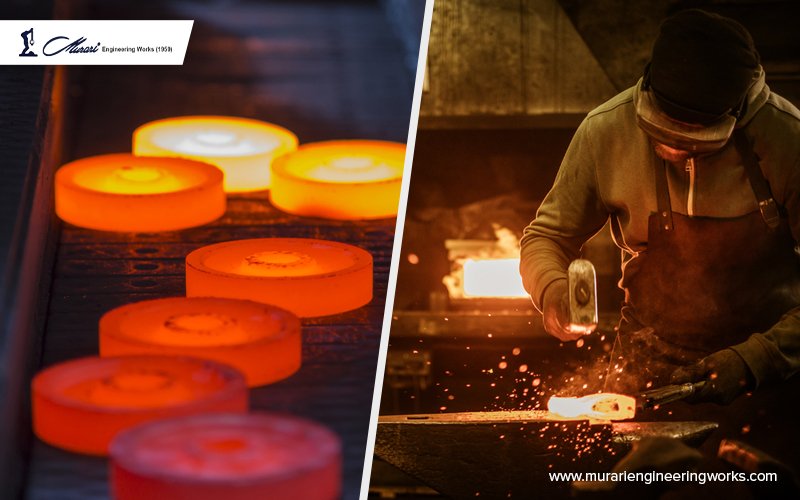Is there any difference between Forging and Machining? Are these processes similar? Do they produce the same results?
Before addressing these questions, let’s know more about forging and machining processes.
What is Forging?
Forging is a manufacturing process used to mould metal into the desired shape by hammering or pressing. It usually involves heating the metal to make it more malleable.
In forging, the metal flows into the die cavities to attain the required shape. Forging processes are often classified according to the type of die used.
It is also segregated based on the temperature at which forging is performed like cold forging and hot forging.
What is Machining?
Machining is a subtractive manufacturing process that involves a controlled material removal process.
It removes excess metal from raw material parts. Most forged products need machining to achieve the specific dimensions of the part.
Machining utilises a wide range of methods and techniques. It is carried out by Computer Numerical Control (CNC) which uses computers to control the movement of cutting machines.
Relation between Forging and Machining
Forging results in a loosely formed part that closely relates to the required shape. But particular applications require specific dimensions.
This is why the forged part goes through machining. During machining, the excess metal is removed from the part to give it a specific shape and dimension to suit a given operation.
Machining makes the product ready for final assembly. Nowadays, it is done with the help of computers for increased efficiency.
Forging Applications
Forging has many applications in the manufacturing world. Some applications of forging are:
- Tractor parts
- Combine harvester parts
- Industrial sewing machine parts
- Two-wheeler parts
- Four-wheeler parts
- Automotive forging parts and accessories
- Scaffoldings
Machining Applications
Machining is used in many mechanical and technical industries. Some applications of machining are:
- Automotive and trucks
- Agricultural Machinery
- Railroad equipment
- Valves
- Fittings
- Farming equipment
Advantages of Forging
Compared to casting and machining parts, forged parts are stronger. This is because the grain texture of the metal remains intact during forging.
It also offers a higher level of structural integrity by eliminating any structural voids that weaken the part. Forging results in a uniform part that enhances the performance.
Moreover, forging is more cost-efficient in the long term. It helps reduce waste and material costs.
Advantages of Machining
Machining helps you produce complicated pieces with acute-angled shapes. It provides an accurate surface finish to forged parts.
It is suitable for one-time production or for parts that don’t require mass production. Because machining is cost-effective for small-scale production.
Machining is also perfect for the parts that are not subjected to much wear and tear. It is apt for lower-impact applications.
Major Takeaways
Forging and Machining are two different manufacturing processes. But in most industries, they are used together to achieve the desired final product.
While forging produces the required shape of the metal, machining offers the final dimensions and surface finish to the product.
Murari Engineering Works is a forging unit in Punjab that offers the best forging and machining parts at reasonable prices.










